- Administrator
- Albums and Singles
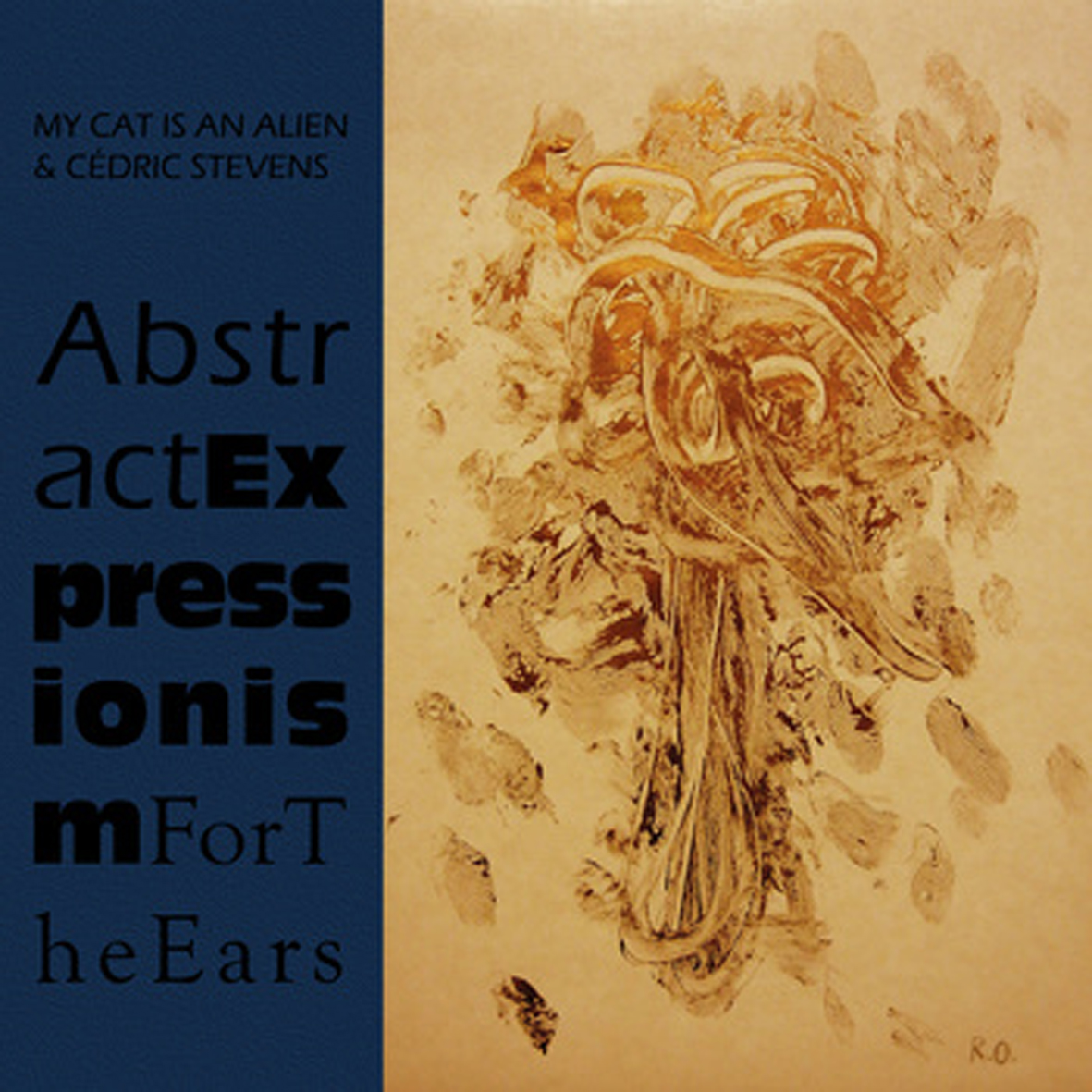 No one will ever accuse the Opalio brothers of lacking ambition.  Their previous release, 2013's Psycho-System, was a hallucinatory drone epic that spanned six discs and clocked in at over three hours.  Now they are back with a triple-album in a very different vein.  Though similar in its staggering scope, Abstract Expressionism for the Ears is often considerably more accessible and organic-sounding than its more insular and deeply warped predecessor.  Part of that credit certainly goes to Stevens, who proves himself to be a very sympathetic collaborator, but the primary difference is the focus on unconventionally employed (and melodic) piano strings, which often makes Abstract Expressionism resemble classic Laraaji plunged into an otherworldly rabbit hole.  Most other times, of course, there is no earthbound point of reference to be found at all.
No one will ever accuse the Opalio brothers of lacking ambition.  Their previous release, 2013's Psycho-System, was a hallucinatory drone epic that spanned six discs and clocked in at over three hours.  Now they are back with a triple-album in a very different vein.  Though similar in its staggering scope, Abstract Expressionism for the Ears is often considerably more accessible and organic-sounding than its more insular and deeply warped predecessor.  Part of that credit certainly goes to Stevens, who proves himself to be a very sympathetic collaborator, but the primary difference is the focus on unconventionally employed (and melodic) piano strings, which often makes Abstract Expressionism resemble classic Laraaji plunged into an otherworldly rabbit hole.  Most other times, of course, there is no earthbound point of reference to be found at all.
The unpredictable tug-of-war between genius, excess, and impenetrability is one of MCIAA's most endearing traits: they might make some of the most brilliantly strange and beautiful music around, yet they always do it on their own terms, and those terms can be somewhat prickly.  Abstract Expressionism is a perfect example of that phenomenon, as it could have easily been a near-perfect single album made up of just "Tasting the New Ether" and "When the Sun Goes Down There is Nothing Left to Tune."  Instead, the Opalios opted to expand their triumph into a complex and challenging tour de force three times as long.  Whether that was a good idea or not is difficult to say.  On the one hand, it spreads the trio's best moments a bit thinner than would be ideal, but it compensates by turning Abstract Expressionism into an event rather than a mere album and lures listeners into some darker, stranger waters that that they might not have normally entered.
In any case, the opening "Tasting the New Ether" easily stands as one of the finest moments in the Opalio’s entire discography.  Built upon a gently rippling motif presumably played on Roberto's vertical piano, it weaves a dreamy, hallucinatory spell that is gradually threatened by stumbling, overlapping notes and an arsenal of chirps, snarls, and swells from Maurizio and Cédric.  I could have easily listened to "Ether" endlessly ebb and flow around its simmering miasma of feedback for another hour and it would have been great.  Instead, however, the piece gradually collapses into a black hole and it is gloriously heavy and wonderful.  "When the Sun Goes Down There’s Nothing Left to Tune" performs a similarly impressive balancing act between stuttering piano loops, rattling strings, and an increasingly roiling swell of abstract noise and electronics.  It succeeds just as beautifully.
The remaining two epic pieces, however, differ considerably.My pick of the two is "Intersection of Shadows," which sounds like a howling, gnarled transmission from deep space that eventually dissolves into a bizarre soup of flanging noise and something that resembles the garbled, digitized sounds of an alien rainforest. The 25-minute "Shifting at Zero Gravity," on the other hand, is a floating oasis of languorous calm, gently rattling strings, and echoing electronic chirps.  Gradually, however, it begins to evoke the cold enormity of space as Roberto's wordless vocals create an eerie, subtly dissonant undercurrent and the intruding rumbles, hisses, and distant howls become increasingly hard to ignore.
The album winds down with two comparatively shorter pieces, the 15-minute "The Ineffable Call of Tomorrow" and the 4-minute "Just a Tone of White Over Blue."  "The Ineffable Call" retains the mood of drifting interstellar isolation mingled with menace, but revisits the theme in a more grindingly metallic fashion that elsewhere.  "Tone" closes the album with a brief coda-like return to the zither-esque piano strings from earlier, but embeds them in a hallucinatory mélange of reversed noises and blearily dissonant wordless vocals.  While neither piece is a reasonable contender for an album highlight, both are strong enough to avoid seeming like filler and provide a welcome gradual transition back to normal conscious after such a prolonged and deep break with reality.
 
Read More
- Administrator
- Albums and Singles
 While Richard Skelton has long been one of my favorite artists, he has not released anything new in a while that has captivated me quite like he did the first time that I heard him.  That is not to say that he has experienced any sort of creative decline or anything, but he is definitely an artist who tends do one specific thing brilliantly, which regrettably tends to yield diminishing returns with increased familiarity.  With this follow-up to their Wolf Notes collaboration, however, Skelton and Autumn Richardson alchemically transform some of their previous recordings into something quite new and unexpected.
While Richard Skelton has long been one of my favorite artists, he has not released anything new in a while that has captivated me quite like he did the first time that I heard him.  That is not to say that he has experienced any sort of creative decline or anything, but he is definitely an artist who tends do one specific thing brilliantly, which regrettably tends to yield diminishing returns with increased familiarity.  With this follow-up to their Wolf Notes collaboration, however, Skelton and Autumn Richardson alchemically transform some of their previous recordings into something quite new and unexpected.
2011's Wolf Notes, Richard and Autumn's first album together, was a bit of a complicated album for me to process.  I certainly liked it when it came out (and still do today), but it felt like a bit of a lateral move for Skelton rather than a clear step forward.  On one hand, Autumn's vocals made Richard's music seem much more warm, human, and accessible.  On the other hand, the presence of a vocalist (by necessity) deflected focus from Skelton's heaving swells and creaks of bowed strings and their vibrant harmonic wake.  The reason that I bring all that up is quite simple: Succession is culled from the exact same recordings as Wolf Notes.  In fact, the opening title track sounds like it is essentially a reprise of Wolf Notes' closing "Return."
The reason for that is a bit convoluted and wordy, as there is a lot of backstory and conceptual artistry going on behind the scenes.  The short version is this: in late 2011, Richard and Autumn returned to the place (Ulpha) where they had recorded the raw material for Wolf Notes in 2009. In contemplating how the Cumbrian landscape had changed and how the differences in accumulated layers of sediment maintain a natural record of a place's history, the duo were inspired to view their own music like the place that spawned it.
Consequently, Succession returns to a very similar place musically: a place in which some things are the same and some are different, but the raw material is the same as ever.  The actual songs are just the tip of the iceberg though, as Skelton and Richardson's immersion into their surroundings went much deeper than mere philosophical grist for another album: the physical copy of Succession included two related art/poetry pamphlets about the landscape, as well as the self-explanatory A List of Probable Flora.  While my interest in both poetry and botany is minimal at best, I have to admire the depth and scope of *AR's dedication to their themes.
As for the music itself, Succession is mostly just Wolf Notes Redux, only better and more long-form in nature.  Aside from the angelic vocal swells of "Succession," which are very Richardson-centric, most of the album focuses very squarely on Skelton's shimmering, churning strings.  In general, the mood is a melancholy/bittersweet one (particularly on "Wolfshou") and the structure is very loop-like and drone-inspired: *AR are quite content to allow a single motif to slowly fade in, then slowly fade out 15 or 20 minutes later with only the most subtle enhancements made along the way.  That said, the motifs in question are inevitably quite rich, singular, and visceral, which means that they never get boring or too mired in brooding.  Skelton is a genius at assembling texturally dynamic loops that feel simultaneously organic, physical, and mesmerizingly vibrant–a primal, undulating thicket of prickly harmonics and grinding strings will never, ever seem like navel-gazing mopery.
Nowhere does Skelton highlight that singular talent better than on the closing "Relics," which is an absolute masterpiece and like nothing else I have heard from him to date.  Structurally, it is not wildly different from the rest of the album, but it somehow feels much more like a locked-groove than usual (albeit a simultaneously warm, grinding, and achingly beautiful one).  It is not entirely a "locked-groove" though: as it progresses, it seems to get slower and deeper while a quivering nimbus of harmonics forms above the groaning, see-sawing strings...and then it all just gradually fades away.  Quite simply, it is a perfect, endlessly absorbing piece of music–I could listen to it forever.
I would say that the presence of "Relics" alone makes Succession absolutely essential, but Richardson and Skelton have also released a companion album (Echoless) that features an extended, unabridged version of the same piece (as well as a similarly lengthened version of "Succession").  I have no idea which is better, but I would err on the side of saying that more "Relics" is better than less "Relics."  In that sense, the nod goes to Echoless.  Otherwise, Succession (and Echoless as well, I suppose) is yet another fine Skelton/*AR release, but nothing that eclipses or departs dramatically from Richard's equally fine back catalog.  So, in essence, the most withering critique that I can muster here is "Richard Skelton is as characteristically great as ever, but he only surprised me with one song."  I think I can live with that.
Samples:
 
 
Read More
- Administrator
- Albums and Singles
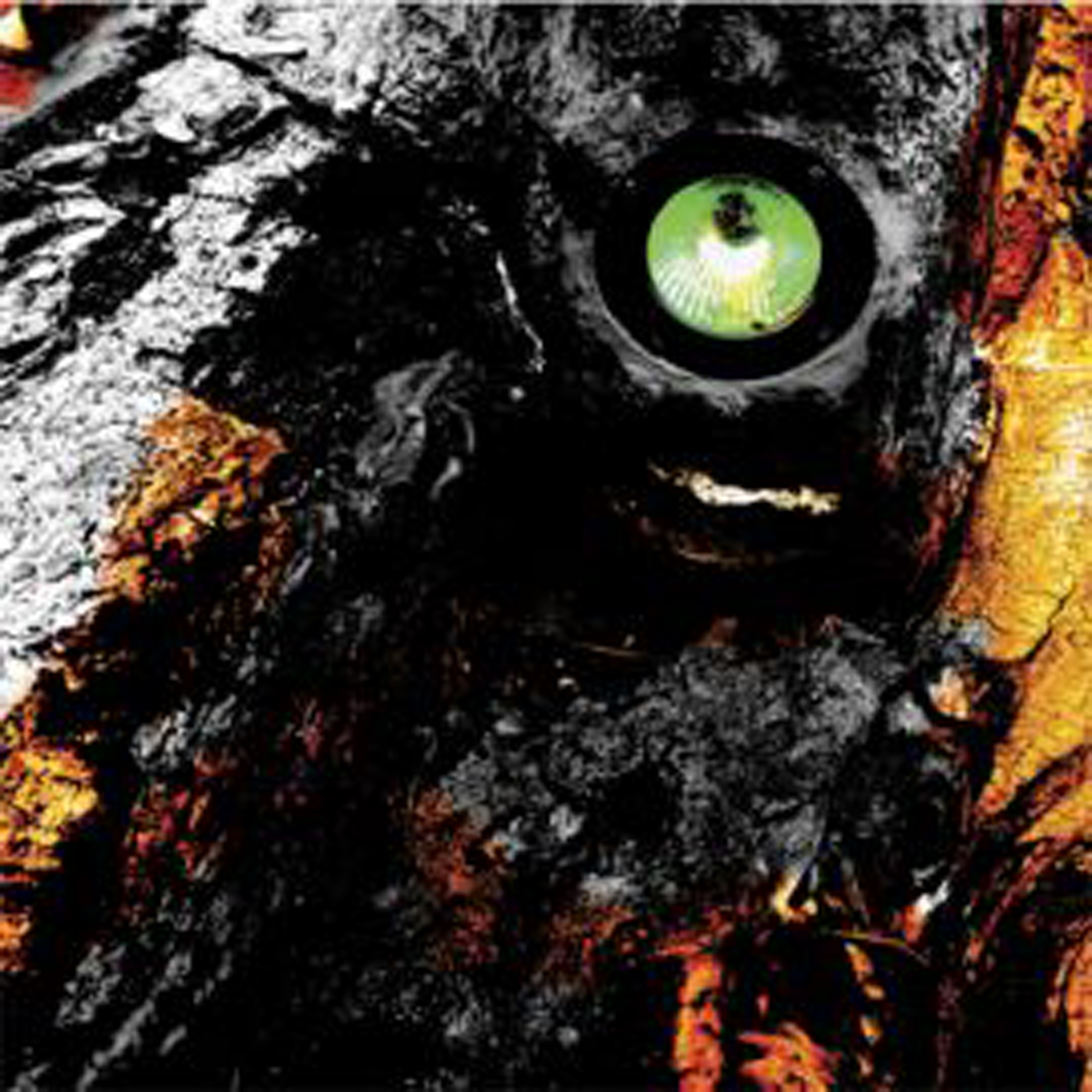 While I have admittedly become a fairly serious Legendary Pink Dots fan again over the last few years, I am still far from obsessive and their voluminous 2013 output was just way too much for me to keep up with.  Consequently, I thought it was probably safe to let this limited, tour-only "sister album" to The Gethsemane Option slip by me.  I was wrong, of course (and I should know better by now).  While Code Noir is not nearly as ambitious or epic as Gethsemane, it happily avoids almost all of the indulgences and excesses that plagued its sister and is much better (and more listenable) for it.
While I have admittedly become a fairly serious Legendary Pink Dots fan again over the last few years, I am still far from obsessive and their voluminous 2013 output was just way too much for me to keep up with.  Consequently, I thought it was probably safe to let this limited, tour-only "sister album" to The Gethsemane Option slip by me.  I was wrong, of course (and I should know better by now).  While Code Noir is not nearly as ambitious or epic as Gethsemane, it happily avoids almost all of the indulgences and excesses that plagued its sister and is much better (and more listenable) for it.
Code Noir opens strongly with one of its best songs, "Six Easy Pieces," which takes a pleasantly rippling loop through a series of dynamically satisfying and seamless transformations.  Everything that is great about the Dots is present, as Edward Ka-Spel's prominent vocals maintain a restrained intensity and cryptic narrative while all variety of low-level surreality unspools around the edges.  More important than the content, however, is the feel of the piece–the band sound atypically comfortable, focused, and relaxed.  I never get the sense that Ka-Spel and company are trying too hard, passing off a meandering jam as a new song, or piling on layers and layers of weirdness for a forced psychedelic experience.  Instead, "Six Easy Pieces" is just a well-constructed, hooky song that patiently unfolds for exactly the right amount of time and never ruins the spell with any wrong moves.
The Dots repeat that delightful feat again with "Life is Hard and Then...," though Ka-Spel's vocals have a bit more edge and urgency to them this time around.  That can often be a deal-breaker for me, as the line separating "intense" and "shrill" can be a very thin one with LPD, yet Edward's passion feels well-earned in this particular song.  Also, it certainly helps that the brooding underlying music is quite good as well, making excellent use of alternately lush and twinkling synthesizers, ominous throbs, and ghostly swells.
The rest of the album is something of a mixed bag, but it is generally an enjoyable one.  "Cloud 6," for example, is a gently dreamlike piano ballad that I like much, much more than I expected to.  "Spare Change" and "Testing 1-2-3," on the other hand, are very much in the '90s industrial-influenced vein of Gethsemane, though they take very different directions from one another ("Spare Change" is kind of simmering and menacing, while "Testing" has a bit of an ambient techno bent.).  All three are quite likable, as is the brief closing soundscape "Two Steps Beyond," which sounds like a melancholy music box melody slowly fading away.  Unfortunately, that still leaves one remaining song ("Ascension 3") to mar an otherwise wonderful album.
I am sure that there is probably someone somewhere who will think "Ascension 3" is awesome, but it represents the convergence of almost all of LPD's worst tendencies for me.  In essence, it is basically a somewhat cheery Krautrock-influenced synth jam, but it is augmented with some backwards, quasi-ritualistic falsetto vocals; some clean guitar noodling; and–most egregiously–a chugging metal riff.  What that ultimately amounts to is a frequently toothless and meandering instrumental jam that sounds like it is probably going to erupt into an "Enter Sandman" cover at any moment.
That said, an LPD album that only contains one song that I actively dislike is a rare treat, especially considering that this is such a seemingly minor release in a year that saw the band release 8 "new" albums (not including their various solo projects).  Also, half the fun of being an LPD fan is the scavenger hunt aspect of sifting through all the dross to find the diamonds, which can appear literally anywhere.  Code Noir features at least two such gems, which is great, but it is even more significant for being so uniformly solid and absorbing: with "Ascension 3" removed, i could easily loop this album for hours without ever getting bored or annoyed.  I still insist that The Silverman's Finisterre is the best LPD-related release of the year, but this modest surprise is certainly a strong contender for my coveted #2 slot (though competition from The Curse of Marie Antoinette is still both ferocious and unresolved).
 
Read More
- Administrator
- Albums and Singles

Artist: Lull & Beta Cloud & Andrew Liles
Title: Circadian Rhythm Disturbance Reconfigured
Catalogue No: CSR139CD
Barcode: 8 2356650682 9
Format: CD in matt-laminate digipak
Genre: Drone / Dark Ambient / Experimental
Shipping: Now
Order CD
From England to the United States and back again... it all started as a simple drone project between LULL (aka Mick Harris of SCORN, ex-NAPALM DEATH), and BETA CLOUD (aka Carl Pace), based on the concept of how insomnia can effect your thought patterns. Billows of powerful bass drones set to indistinct flourishes of temporary insanity, it was released as a limited 3" CD in 2008. Now proudly presented in a deluxe digipak edition on cold spring, the original track is there, but also included is a fierce remix track by none other than legendary sound artist Andrew Liles (NURSE WITH WOUND), with stunning new packaging and artwork. Fans of Lull and Beta Cloud will really sink their teeth into this one; what Liles has created here is not a simple remix but a raging, deconstruction as only he can do. A captivating listen for dark ambient and harsh noise fans alike.
Tracks: 1. Circadian Rhythm Disturbance | 2. Circadian Rhythm Disturbance (Another Toothpick)
Read More
- Administrator
- Albums and Singles
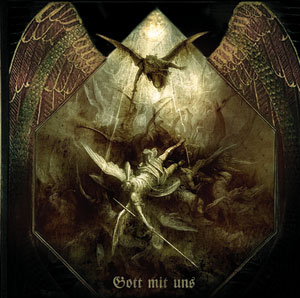
Artist: Kreuzweg Ost
Title: Gott Mit Uns
Catalogue No: CSR141CD
Barcode: 8 2356650512 9
Format: CD in jewelcase
Genre: Martial Industrial / Dark Ambient
Shipping: Now
Order CD
2nd monumental album from Kreuzweg Ost for Cold Spring, headed by Michael Gregor (SUMMONING / AMESTIGON).
"We see a light through the dim and cloudy shadows of our existence. In the electric field between. Total faith and desperation, hope and doubt, eternal bliss and delusion, we walk an unsure path to an unknown end. When the clouds open, the light navigates. The loud music of the sky: pounding drums surrounded by trumpets and swirling voices echoing from a distance unknown". Kreuzweg Ost rises again with God on their side. “Gott Mit Uns” combines a variety of different musical styles: from Martial Industrial to Classical sounds, from deep Ambient to cinematic Pop music. These musical prayers are made for those seeking salvation.
Tracks: 1. Exitus In Paradisum | 2. Calvaria | 3. Stammen | 4. Heiliger Gehorsam | 5. Thy Will Be Done | 6. Black Moon | 7. Geh Mit Gott | 8. Feuertaufe | 9. Geistige Emigration
Read More
- Administrator
- Albums and Singles
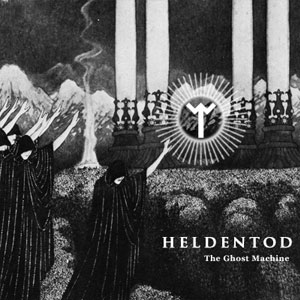
Artist: Heldentod
Title: The Ghost Machine
Catalogue No: CSR131CD
Barcode: 8 2356650502 0
Format: CD in jewelcase
Genre: Death Industrial / Ritual
Shipping: Now
Order CD
Heldentod began in 2005 as an outlet for research into the little-known corners of 20th-Century history. While previous recordings whiplashed between the traditional and the experimental, Heldentod's latest album leaves behind its neofolk and martial-industrial roots to focus solely on electronics, but maintains the fundamental sense of composition found in earlier incarnations. Although now primarily influenced by death industrial and power electronics, Heldentod looks to create the most suitable expression of its key themes, including ghosts, ancestor worship, human sacrifice, neolithic fertility rights, Iron Age religion, mediæval literature, unseen dimensions, inhuman intelligences, and all manner of Forteana.
Tracks: 1. The Ghost Machine | 2. Incorruptible | 3. Encystment Process | 4. In The Company Of Pure Cold Wind | 5. Revenant | 6. The Sentient Darkness | 7. Betrayal | 8. Kindermörderin
Read More
- Administrator
- Albums and Singles
 While Mars were never the most out there of the No Wave movement (they always had a strong rock’n’roll vibe on the studio recordings) but they certainly weren't the most vital to these ears. Their studio recordings, long available at this stage, offered a window into what the group were doing but the collected works were far too brief, too tame. This LP is the first of two new live recordings of the band and shows them in ferocious form. The idea of them being a weirdo rock band is exploded and forgotten; this is phenomenal music that defies categorization or comprehension.
While Mars were never the most out there of the No Wave movement (they always had a strong rock’n’roll vibe on the studio recordings) but they certainly weren't the most vital to these ears. Their studio recordings, long available at this stage, offered a window into what the group were doing but the collected works were far too brief, too tame. This LP is the first of two new live recordings of the band and shows them in ferocious form. The idea of them being a weirdo rock band is exploded and forgotten; this is phenomenal music that defies categorization or comprehension.
 
Live at Artists Space documents two sets performed by Mars at the New York venue during the legendary run of concerts by the bulk of the No Wave movement. This was the festival where Brian Eno witnessed these young, angry bands and put together the classic No New York compilation. Listening to Mars’ performance, it is easy to hear why he was so enthused over the whole thing. Mars absolutely tear apart the air with their anti-rock; hard angles and sharp edges forming in the notes and rhythms of the music.
Both the sets included here (one on each side of the record) cover the same 8 songs, two of which were never put to tape in the studio. However, like a jazz quartet they explore different aspects of the pieces with each rendition. A change of inflection, maybe emphasising, de-emphasising or re-emphasising a chord or a vocal causes a massive shift in the tone of the piece. Both versions of "11000 Volts" destroy any previous recordings I have heard and the rendition of "Puerto Rican Ghost" that closes the first set sounds like a vortex which sucks you into the grey void in between the walls of a disused apartment block in a run-down part of town.
Needless to say after that paragraph that the vibes that ooze from this record bring the music of Mars to another place that the clear but, by comparison, dead studio recordings never reached. Live at Artists Space is one of those live albums like Swans’ Public Castration is a Good Idea or Neil Young’s Weld where the artists’ powers were at a zenith and luckily somebody thought to hit record. With another Mars live LP on the way, it begs the question whether Feeding Tube Records have more recordings from this festival because if any of the other bands managed to grab Eno’s attention when Mars sounded as good as this, then they must have been as incendiary.
 
Read More
- Administrator
- Albums and Singles
 When the studio is used as an instrument, that magic cannot always be reproduced in a live setting, on the fly, with variable acoustics and limited equipment. That's the downside of reissues like 20 Jazz Funk Greats: the album is faithfully presented, gloriously remastered, and has never sounded better, but it has also been watered down with bonus material that, in this particular case, is inessential.
When the studio is used as an instrument, that magic cannot always be reproduced in a live setting, on the fly, with variable acoustics and limited equipment. That's the downside of reissues like 20 Jazz Funk Greats: the album is faithfully presented, gloriously remastered, and has never sounded better, but it has also been watered down with bonus material that, in this particular case, is inessential.
The first disc comprises the original album, 20 Jazz Funk Greats, in all its glory: this is Throbbing Gristle's most accomplished work, and one of the most essential artifacts of the early industrial era. After the grab-bag of Second Annual Report, and the confrontational sprawl of DoA, this is the most accessible TG would ever sound. Jazz and Funk it ain't—Great, yes, absolutely. It's all right here—glimpses of pop-song structure, quirky noise and industrial sound collage, subverted dance and techno hits, the blueprint for minimal wave, unsettling ambience—everything you could ever want. Hell, even if you don't care for the music, has there ever been a more frame-worthy album cover than this one?
Granted, there have been books written about 20 Jazz that explain its appeal better than I could, but I'll continue: "Persuasion," with its slow, sinister bass line while Genesis P-Orridge deadpans about how you "gotta get some" (with a woman's harsh, muffled shrieks in the background) is a distillation of TG's shock antics and dark humor into seven minutes of all tension, no release. Cosey Tutti's vocal turn on the bouncy, airy "Hot on the Heels of Love" is perhaps the perfect contrast: slick, feminine, and less tongue-in-cheek (and misogynistic), and a fine foreshadowing of her future in Chris & Cosey. Ambient sounds and field samples (seagulls!) spearhead tracks like "Beachy Head" and "Exotica," suggesting a new direction TG could have steered, had they not disbanded soon afterward. "Walkabout" does Eno better than Eno himself. "Six Six Sixties" is nothing more than a trebly drum machine, a disjointed guitar line, a bit of tambourine, and P-Orridge's nihilistic musings: "Pain is the stimulus of pain / but then, of course, nothing is cured." Sure, it's not exactly noise terrorism like the early stuff—but it is sexually charged, darkly humorous, and you can dance to it.
It's worth noting that Chris Carter's remastering job is superb. Everything on 20 Jazz sounds as crystal-clear and pristine as Throbbing Gristle were ever intended to be heard (maybe more so), from P-Orridge's discordant vocals, to the pulsing grooves that anchor the lion's share of these songs, to the strange tape manipulations and unsourced sounds. I'm not a big fan of most albums that are being touched up ("remastered") in the Spotify era; often, the mastering job is simply cranked louder to accommodate today's listening vehicles—cheap laptop speakers, iPods, tablets, and narrow-minded convenience tools. But Carter has given 20 Jazz the full Extreme Makeover treatment, complete with new wardrobe, professional haircut, and make-up, not just a $20 trip to the barbershop. This album has always been an ideal place to set foot into TG's difficult-to-grasp world; the ace remastering job only enhances that feeling.
The bonus disc unearths a nine-song live set from the 1979, weaving a few of the album's key moments ("Convincing People," "What a Day") in between selections from DoA ("Five Knuckle Shuffle") and various non-album cuts. The reading of "Convincing People" is among the better tunes—slightly extended, laden with sharp feedback and occasional bursts of white noise, P-Orridge's odd ramblings coming off wholly unscripted and manic, like a mechanized wind-up version of Mark E. Smith. Others are far from essential, like "Five Knuckle Shuffle" with its vocals mixed high, and the punchy low-end and grotesque tape manipulations of the DoA studio version missing in action. "What a Day" also falls flat compared to the studio version on disc one, its throbbing pulse flattened by any lack of the studio version's gut-wrenching bass presence. The two versions of "Discipline" that closed the Grey Area and Elektra CD issues in the '90s are also tacked onto this package—essential listening, yes, but nothing new for those with an earlier pressing.
By most accounts, Throbbing Gristle were a polarizing live act—provocative and confrontational, as expected from any band that performed blood and milk enemas on stage. (Your move, Gibby Haynes.) What was heretofore less documented, but is now heavily supported by the evidence in this reissue, is that TG were sonically hit-or-miss in a live setting, given their reliance on studio trickery, tape manipulations, and cut-and-paste composition. This isn't anything new for fans who own the four-disc TG live box released on Mute in 1993. Throbbing Gristle's most powerful work has already been released on their studio albums, odds-and-ends compiled on Greatest Hits and various (and plentiful) collections over the years. Perhaps 20 Jazz Funk Greats would have been better served by a stand-alone remastering job, with no fluff, and a lower price tag for its cult fanbase. All of which is to say that, hey, even if I'm not very convincing, people... I think an album this good deserves just a bit better.
Samples:
Read More
- Administrator
- Albums and Singles
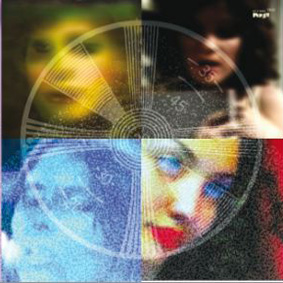
This striking and aberrant effort originated when Mark found a forgotten four-track recording of a mangled pop song that he had made back in 1982 and decided to revert back to those more primitive recording methods.  While these songs borrow their directness and uncharacteristically raw sound from that teenaged experiment, the resultant album is still a very dense and perversely sophisticated one.  Also, it could not possibly be further from the shimmering and sublime work Mark did with Seefeel.  Instead, The Revenant Diary sounds like '90s dance pop filtered through an especially gritty, vibrant, and disturbing nightmare.
 
I am not sure quite what I expected from this album, but I was very quickly wrong-footed as soon as the beat came in on the opening piece ("Look Into My Eyes").  It sounds like some kind of anachronistic and baffling industrial-damaged take on new jack swing that has no business at all popping up on an album in 2012.  Once I got past my initial disbelief at Van Hoen's willful use of dated beats, however, I became mesmerized by what a uniquely weird, hallucinatory, and heavy piece it actually was as spectral soul diva vocals and dissonant, vaguely sinister strings swelled and drifting around the insistently lumbering beat.  That uneasy collision of seemingly disparate threads turned out to be one of the primary themes of album, as several other tracks ("Don't Look Back" and "Remember," for example) sound like Mark jacked some beats from his favorite Portishead album and fed them into a machine that makes everything sound paranoid and phantasmagoric.  Given the album's title, that makes perfect sense: a revenant is something dead that returns to terrorize the living.
It's an aesthetic that absolutely should not work, but it is executed and produced so beautifully that turns out to be unexpectedly amazing: the slow-motion beats and deep bass lines have a bludgeoning physicality, the chord progressions are ominous and unsettling, and the repurposed female vocals make it all seem fragile, forlorn, and disorienting.  In fact, the presence of the pop touches makes everything seem infinitely more wrong and brilliantly deviant than it possibly could have sounded otherwise.  It's like being at a party where everyone is deeply lonely and enveloped in existential horror, but the DJ continues to spin big, sexy beats out of sheer malevolence.
The album occasionally diverges from that admittedly awesome path though, as Mark has a few other tricks up his sleeve.  "No Distance," for example, delves into twinkling sequencer-heavy ambiance.  It's a decent piece, but it is disappointingly non-distinctive.  Some of the other digressions are much more interesting though.  "Why Hide From Me?" has similarly ambient leanings, but enhances them with a fragile, warbling guitar lead that sounds like it is being played back on either a badly decayed tape or a dying tape player.  Then the album's closer (and arguable centerpiece) "Holy Me" dispenses with musical accompaniment altogether and simply unfolds a ten-minute-long choral reverie of creepily digitized female voices.  I've heard similarly otherworldly passages on albums by Brock van Wey and Peter Christopherson's Threshold Houseboys Choir project, but they never fail to get to me and this is easily the longest sustained foray that I have heard.  It sounds simultaneously ecstatic and alien.
The albums's sole flaw is simply that it is overwhelming.  Mark offers very few moments of respite from his insular, claustrophobic, and uncomfortable world.  He clearly didn't set out to entertain anyone or write some killer singles, but he succeeded admirably in creating great and challenging art.  There are some odd and temporally dislocated aesthetic decisions and he perhaps included a few more songs than were necessary or entirely welcome, yet there is no denying that he was truly inspired here.  The Revenant Diary's best moments are singularly warped and almost visionary: Van Hoen took soul and rhythm and alchemically détourned them into tools for disseminating isolation and despair.  That is exactly the sort of endeavor I can get behind.
Samples:
 
 
Read More
- Administrator
- Albums and Singles
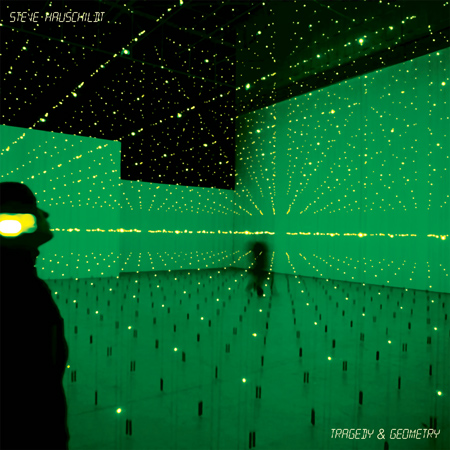 As the least prolific member of Cleveland kosmische collective Emeralds, Steve Hauschildt's first widely available (and officially pressed) solo release is long overdue. Recorded over three years, and released on Kranky in late 2011, the album is a twinkling gem—an hour's worth of vintage, Berlin-style electronics and ambience.
As the least prolific member of Cleveland kosmische collective Emeralds, Steve Hauschildt's first widely available (and officially pressed) solo release is long overdue. Recorded over three years, and released on Kranky in late 2011, the album is a twinkling gem—an hour's worth of vintage, Berlin-style electronics and ambience.
Tragedy and Geometry isn't leagues away from recent Emeralds recordings, like 2010's masterful Does It Look Like I'm Here?, but it utilizes a noticeably pared-down array of instruments. This being a solo album, variables like Mark McGuire's endlessly looped, delayed guitar explorations are stripped away, and Hauschildt's synthesizer is under the spotlight. Like Emeralds, Hauschildt's solo work draws heavily from the much-revered techniques of '70s Tangerine Dream, Ashra, Cluster, Klaus Schulze, and other giants of German electronic music and Krautrock. Given his winning resume with Emeralds, it's no surprise that Hauschildt executes beautifully on his own.
As a whole, Tragedy and Geometry is inviting, full of warm synthesizer textures and tones that pulse and glow like a distant satellite. Pieces like "Peroxide" and "Blue Marlin" are characteristic of how the album would sound condensed into a 3- to 4-minute highlight reel: deep, kosmische synthesizer tones are painted onto Hauschildt's aural canvas in broad strokes, highlighted by an ever-present, breathing ambience and a gentle, twinkling melody underneath. The title track follows nearly the same template, but punctuates itself with radiant synth rays that feel eternal, like they've always existed out there in the universe, and just now been captured onto tape.
The album's key strength (and its replayability) is in its almost mathematical adherence to melody. If Tragedy and Geometry were depicted as an image of the night sky, littered with stars, then each melodic pattern would be a constellation, simultaneously self-contained and part of the greater whole. By the same analogy, if there is any fault to be found, it's that the whole thing is a bit homogeneous: songs and sounds blur into each other, and earlier melodies are recalled in later ones (for example, "Already Replaced" echoes "Polyhymnia" almost identically at its start). As when the night sky casts out its glow by starlight, constellations can be picked out and observed; at the same time, at a glance, the whole sky kinda looks the same.
The moments that stand out, then, are Hauschildt's attempts to break the mold. "Batteries May Drain" marries a throbbing bass line with a krautrock-inspired drum loop, pushing Hauschildt's glittering, beatless melodies into a more traditional structure—a fine taste of how his work could evolve if he experiments with overt percussion. The album's centerpiece and desert-island selection, though, is the sprawling, 11-minute "Music for a Moiré Pattern," which takes the opposite route of Tragedy's more condensed pieces. Here, Hauschildt patiently builds the song's foundation for half its runtime before introducing sharp bursts of cosmic synth tones in three-note clusters, which pierce through the ambient fog like laser beams. It's a beautiful effect—as absorbing, hypnotic, and undeniably moving as the best moments in Emeralds' expansive catalog.
Samples:
Read More


 (in progress)
(in progress)